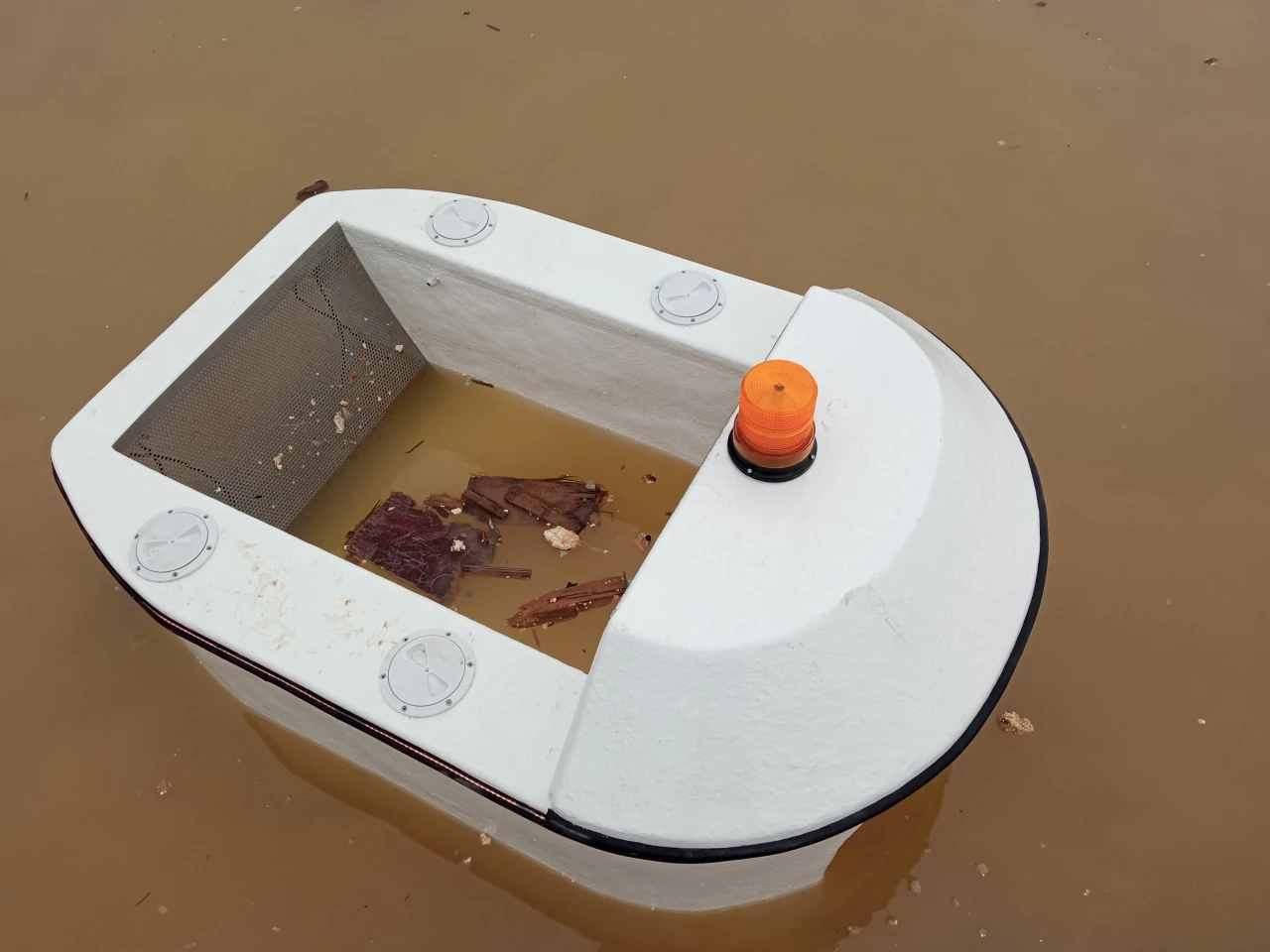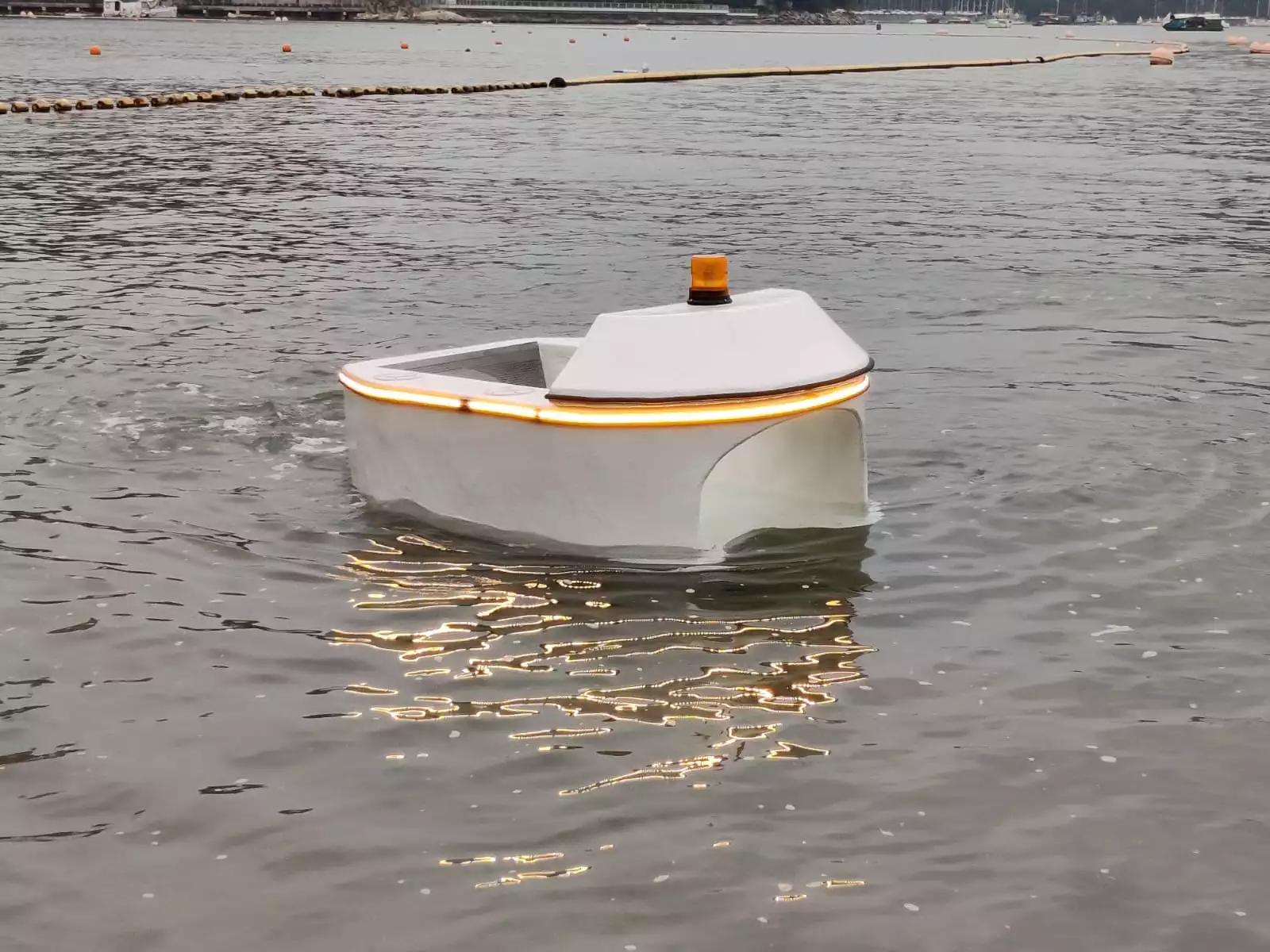Although cleaning up the humungous Great Pacific Garbage Patch is a daunting concept, removing trash from local waterways is much more feasible … and that's exactly what the Clearbot robot is designed to do.
Developed by Hong Kong-based startup Open Ocean Engineering, Clearbot was commercially launched last November. Intended to operate in collaborative swarms – in areas such as harbors, lakes or canals – one or more of the aquatic robots can be remotely controlled in real time, or they can operate autonomously.
In the latter case, the Clearbot either moves back and forth across a predefined geofenced area, or it uses its integrated computer vision system to spot and go after individual pieces of floating litter. Either way, the trash goes through the open bow of the robot, accumulating in a mesh bin within. A front conveyor belt system is in the works, to more effectively gather garbage.

Once the Clearbot's battery starts getting low – or once its litter bin is full – the robot makes its way back to a central docking station. Its bin is then automatically emptied, plus its battery is juiced up by a solar-powered charging system.
According to the company, a single robot can hold up to 200 liters (53 gal) of waste, and can thoroughly clean the surface of 1 square kilometer (0.4 sq mi) of water within an eight-hour period. One charge of its battery should be good for a claimed 48 hours of use. The dock can in turn hold up to four robot-loads of garbage before requiring manual removal.
"At the moment we're focused on scaling up our solution in Hong Kong with land reclamation companies, where we help them with daily site cleanup activities," company co-founder Sidhant Gupta tells us. "We also have an on-hold project in Surabaya, Indonesia where we'll be cleaning up two urban canals, currently awaiting Covid lockdown clearance."
Rental rates for the system currently sit at US$2,000 per robot, per month.
Source: Clearbot






